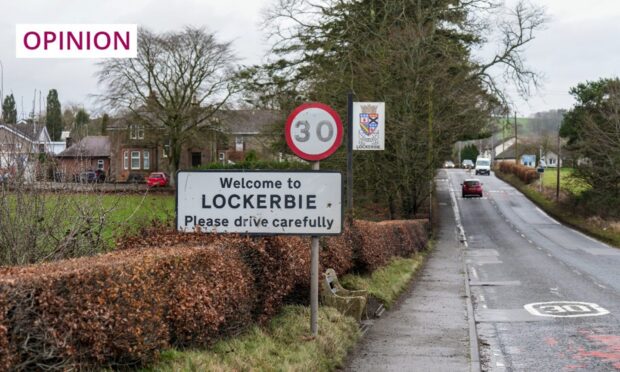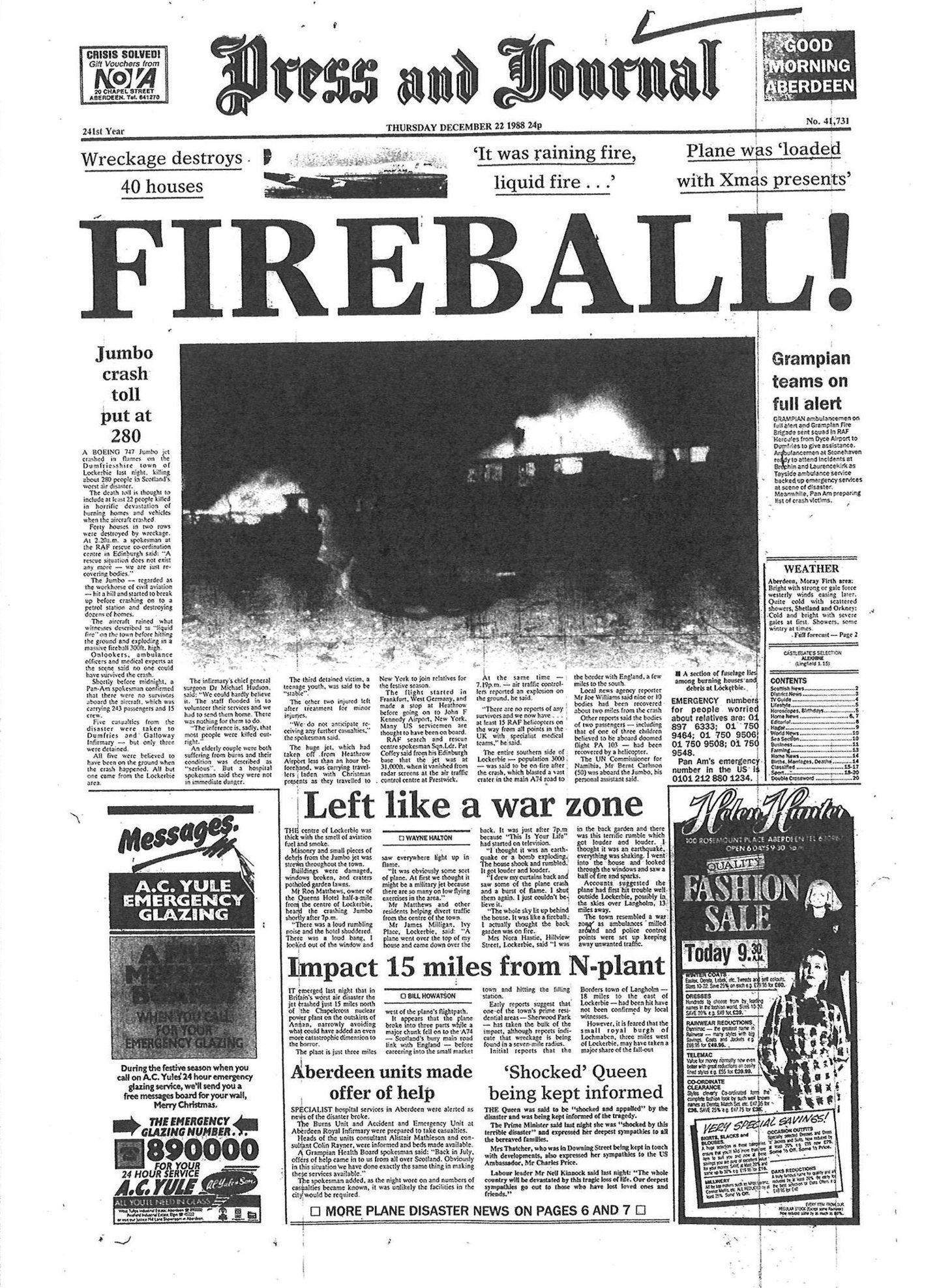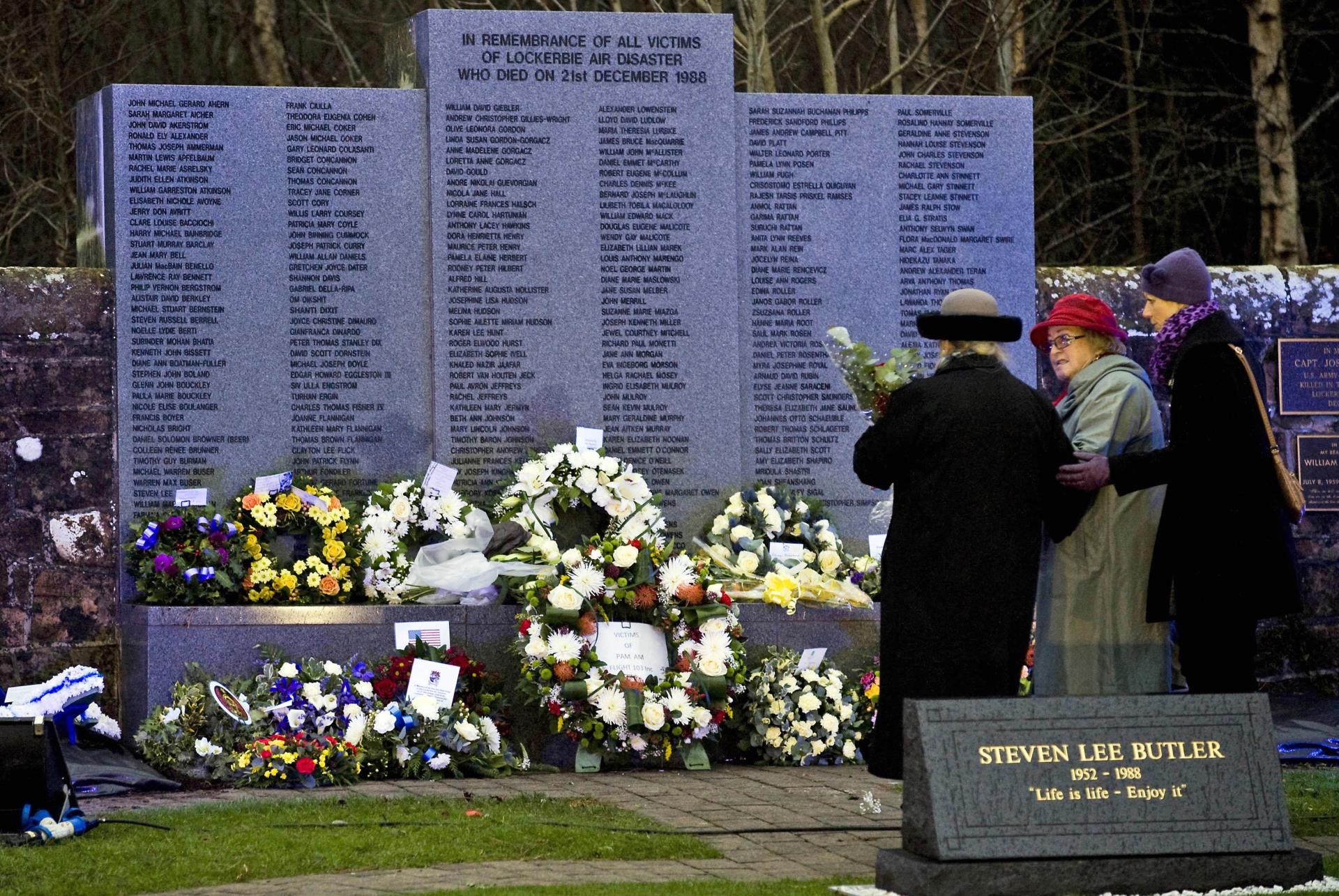Exactly 35 years ago, I spent the night at Lockerbie, reporting on the downing of Pan Am flight 103, which had killed 270 people.
Along with two colleagues, I had been in the town since just after 9pm the previous evening, sending reports to my newspaper throughout the night; updates not only on the unfolding story of the tragedy, but also from the various hastily-arranged press briefings held by the police, the local MP, the Scottish secretary, the UK aviation minister, and a visibly shell-shocked United States ambassador.
Once back in my office in the morning, I wrote a holding story for the first edition of our evening newspaper. These were to be the first of many stories I wrote about the Lockerbie terror attack in subsequent years.
In 1990, I attended several days of the fatal accident inquiry which was held in Dumfries to investigate the bombing. The following year, I was present at the press conference hosted by the then Lord Advocate Peter Fraser, at which he named two accused Libyans, Khalifah Fhimah and Abdelbaset Al-Megrahi, as the men responsible for the bombing. In 1999, I was at Camp Zeist in Holland, to watch the two men being flown in to be tried before a Scots court.
In the event, Fhimah was acquitted and, so far, Megrahi is the only person to be convicted of involvement in the atrocity. In 2009, I was at the press conference in St Andrew’s House in Edinburgh at which Justice Secretary Kenny MacAskill announced that he planned to release Megrahi on compassionate grounds, as he was suffering from terminal cancer. He died in Libya three years later.
35 years of theories
Over the years, I have written countless news stories on the various theories and allegations about the involvement of assorted terrorist groups and rogue states, along with additional pieces of evidence which have emerged from various sources.
In 2015, the Scottish Crown Office named two more Libyans they wished to interview as suspects, though nothing has come of this development. Then, three years ago, the United States named Abu Agila Masud as the man the country claimed had actually made the bomb. Last year, he was handed over to American custody, where he awaits trial.
However, even if he is found guilty, and even if Megrahi was guilty of the charges which he and his family – along with many others closely involved in the investigation – claim he was not, they were surely small cogs in the operation.
Who planned, ordered, and funded the bombing? Initial investigations pointed the finger at Iran.
A few months before the Lockerbie attack, a United States warship, the USS Vincennes, had mistakenly shot down an Iranian airliner, killing 290 people. Early conspiracy theories claimed that Iran had paid a terrorist group – the Popular Front for the Liberation of Palestine General Command, based in Syria – to carry out the attack in revenge.
However, within a couple of years, attention switched from a Syrian-based organisation to Libya. Could this have had anything to do with the fact that the US and its allies now needed bases in Syria from which to attack Saddam Hussein in the first Iraq War? Surely not?
Where are we now with the investigation?
Libya, admittedly, also had a revenge motive for attacking a US aircraft. In 1986, a bomb attack at a disco in Berlin killed over 200 people, 79 of them American. Libya was suspected, with Masud believed to have been the bomb-maker, and President Ronald Reagan launched a bombing attack on Tripoli, which killed President Gaddafi’s baby daughter, along with others.
A third theory suggests a joint revenge bid, with Libya being subcontracted by Iran to carry out the attack. There is little doubt that Libya was involved to some extent, though whether as the instigator or simply a contractor is unclear.
Megrahi was convicted largely on circumstantial evidence, along with identification from a Maltese shopkeeper who claimed to remember him as the man who bought clothes from his shop, later found among the Lockerbie wreckage. Lord Advocate Peter Fraser subsequently cast doubt on his reliability.
So, where are we now with the investigation? Megrahi was convicted, though doubts still remain about his guilt, and he is now dead. Masud awaits trial in the US, and may well have had some involvement, though probably as a mere foot soldier.
I still have flashbacks to the sights I witnessed on that dreadful night 35 years ago, some of which I have never spoken about. But we still don’t know who, or which country, was behind the deaths of 270 people. And, sadly, the chances are that we never will.
Campbell Gunn is a retired political editor who served as special adviser to two first ministers of Scotland, and a Munro compleatist



Conversation